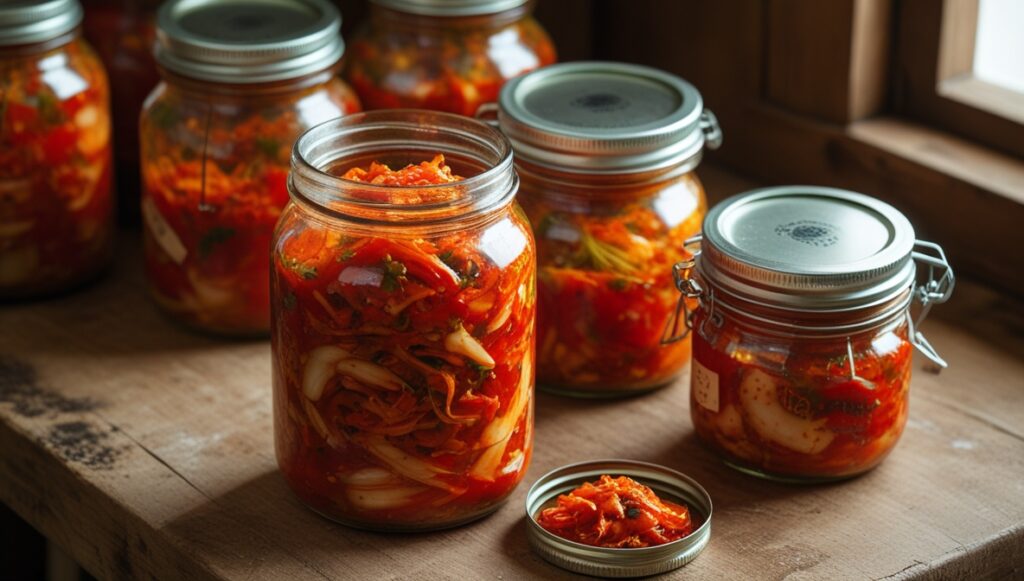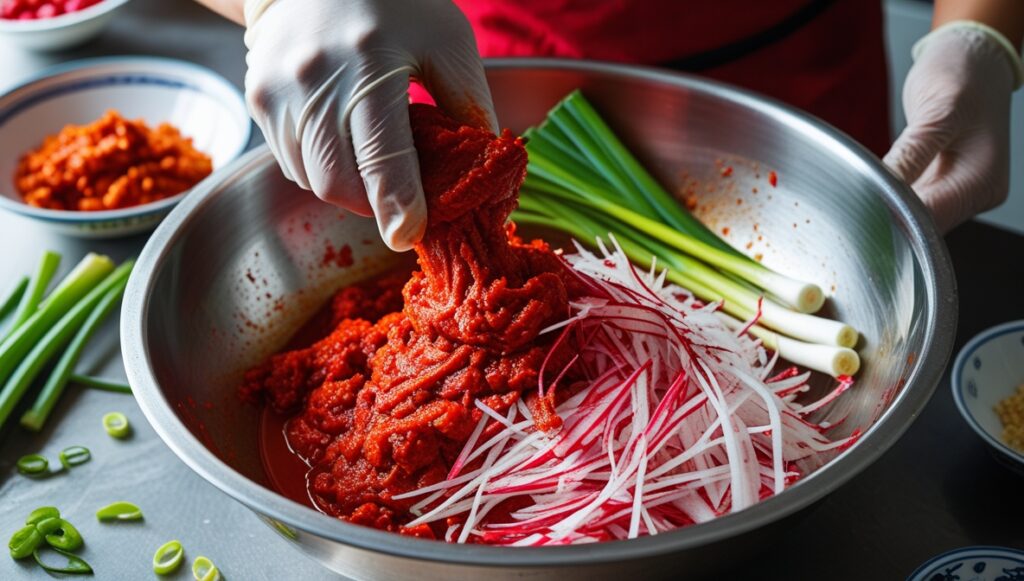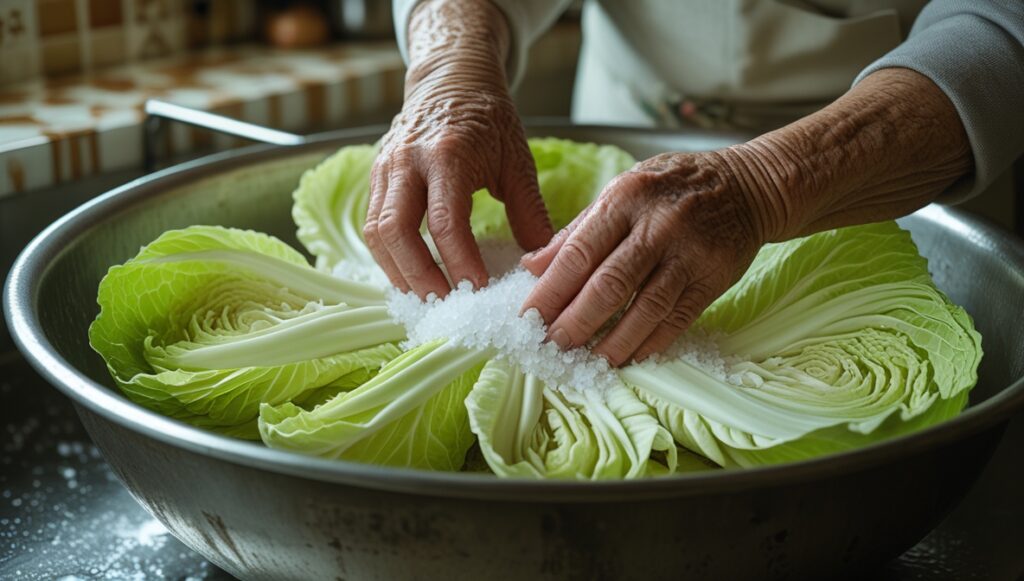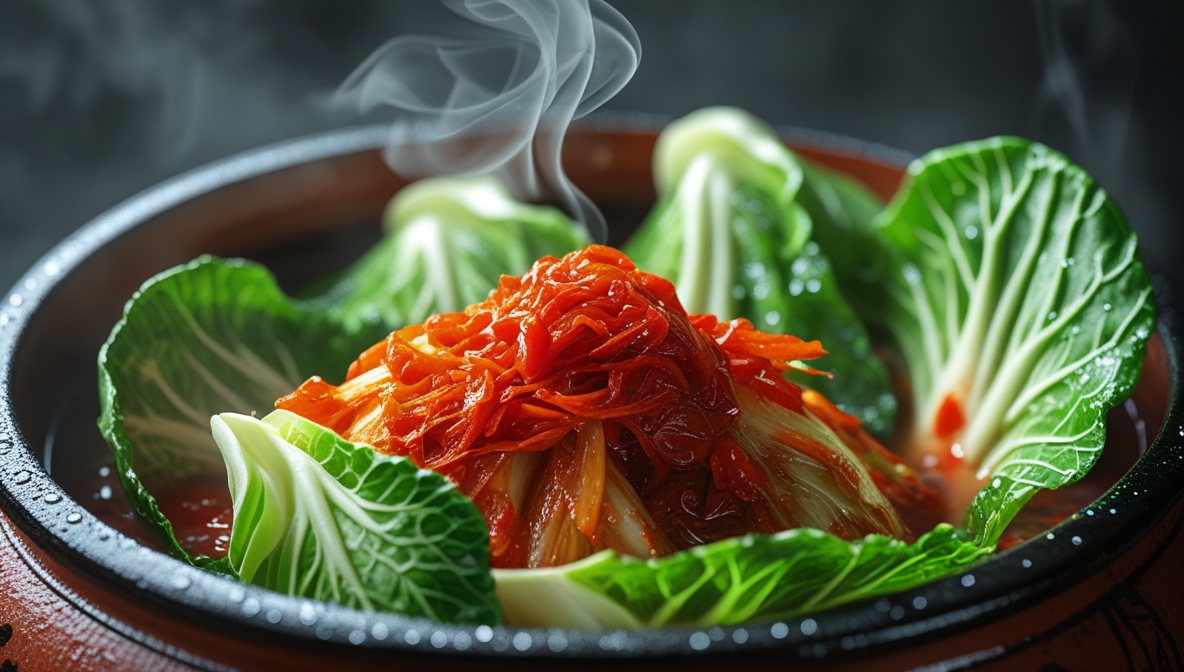Introduction
Kimchi is more than a fermented vegetable dish—it embodies the spirit of Traditional South Korea Food. Bold, tangy, spicy, and packed with umami, this national treasure tells a story in every bite. Often accompanying nearly every meal, it has grown from humble preservation origins into one of the Famous Foods in South Korea and an international sensation.


History & Cultural Significance
This iconic dish dates back over 2,000 years, originating during the Three Kingdoms period. Initially developed to preserve vegetables for winter, it transformed significantly after the 17th-century introduction of chili peppers. The annual practice of Kimjang—a communal event to prepare large batches for winter—remains deeply ingrained in Korean life and is even recognized by UNESCO as an Intangible Cultural Heritage.
Core Ingredients & Regional Styles
Essential Ingredients:
Napa cabbage or Korean radish
Korean chili flakes (gochugaru)
Garlic, ginger, scallions
Fish sauce or fermented shrimp
Sea salt and sugar
Regional Varieties:
Seoul: Balanced, mildly spicy with seafood essence
Jeolla Province: Rich and ingredient-heavy
Gyeongsang: Bolder and saltier flavor
Hamgyong (North Korea): Less spicy, includes fermented fish
Modern Twists:
From vegan versions to global fusions like tacos, grilled cheese, and pasta, it’s becoming a foundation for culinary creativity worldwide.
Cooking Process & Difficulty Level

Skill Level: Intermediate
Step-by-Step Guide:
-
Soak cut napa cabbage in salted water (4–6 hours).
-
Rinse thoroughly and drain.
-
Prepare the spice paste with chili flakes, garlic, ginger, and fish sauce.
-
Massage paste into the cabbage.
-
Store in jars for 1–3 days at room temperature, then refrigerate.
Want to try it at home? Scroll down for the Best Recipe!
Where to Eat Kimchi in South Korea
If you’re wondering Best Places to Eat Kimchi during your visit, don’t miss these iconic spots:
-
Jongno Kimchi House (Seoul): Hands-on tasting sessions
-
Gwangjang Market (Seoul): Fresh, homemade varieties
-
Kimchi Museum (Seoul): Learn and sample regional styles
-
Jirisan Restaurant (Jeonju): Artisan dishes made with love
-
Joo Ok (Michelin-starred, Seoul): A gourmet twist on classics
Perfect Pairings
Best Drinks:
-
Traditional rice wine (makgeolli)
-
Green tea
-
Crisp lager or sour beer
Ideal Side Dishes:
-
Steamed rice
-
Korean pancakes (jeon)
-
Grilled pork belly (samgyeopsal)
-
Tofu or egg dishes
Fun Facts & Trivia
-
South Koreans consume over 1.5 million tons annually.
-
Most households have dedicated refrigerators for storing it.
-
It was even sent to space with astronaut Yi So-yeon in 2008.
-
BTS members often mention kimchi stew as their comfort food.
Nutritional Value & Diet-Friendly Options
Rich in probiotics, fiber, and vitamins A, B, and C, Kimchi is a gut-friendly powerhouse. It supports the immune system and may reduce inflammation.
Diet Adaptations:
-
Vegan: Skip fish sauce
-
Gluten-Free: Use gluten-free soy sauce
-
Keto: Naturally low-carb
Best Kimchi Recipe to Try at Home
Here’s a simplified version of the Best Kimchi Recipe you can make in your own kitchen:
Ingredients:
-
1 napa cabbage
-
1/4 cup sea salt
-
1 tbsp sugar
-
1 tbsp grated ginger
-
2 garlic cloves (minced)
-
2 tbsp gochugaru
-
2 chopped scallions
-
2 tbsp fish sauce (or vegan alternative)
Steps:
-
Soak chopped cabbage in salt water for 4–6 hours.
-
Rinse and drain thoroughly.
-
Blend garlic, ginger, sugar, gochugaru, and fish sauce into a paste.
-
Massage paste into cabbage and pack into a sterilized jar.
-
Ferment for 1–2 days at room temp; then refrigerate.
Pro Tip: Wear gloves when mixing to avoid chili burns.
Global Reach & Fusion Dishes
As one of the Famous Foods in South Korea, Kimchi has influenced culinary trends worldwide:
-
USA: Burgers, quesadillas, hot dogs
-
France: Croissants with a twist
-
Australia: Avocado toast with a fermented kick
Chefs around the world now include it on both street food and fine dining menus.
Global Cousins: How It Compares
-
Sauerkraut (Germany): Both are fermented cabbage, but this Korean dish is spicier and more complex.
-
Indian Pickles: These are oil-based, while kimchi uses a salty brine.
-
Curtido (El Salvador): Milder and vinegar-based compared to the bolder Korean flavors.
Among the Popular Foods in South Korea, few are as culturally rich and globally adored as kimchi. Whether you’re sampling it at a Seoul market, making it at home with the Best Kimchi Recipe, or enjoying it on fusion dishes abroad, this staple of Traditional South Korea Food offers an unforgettable experience.

